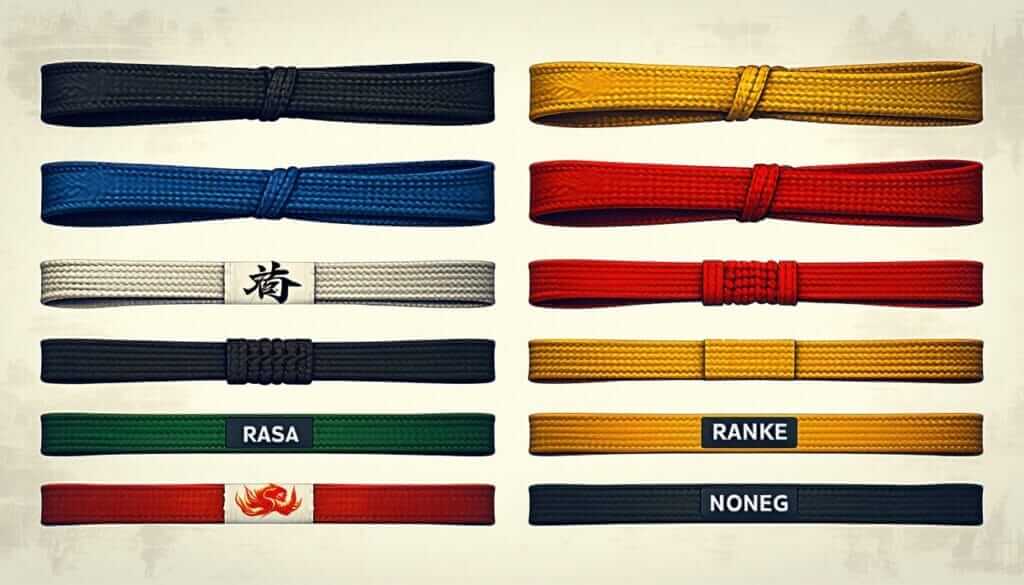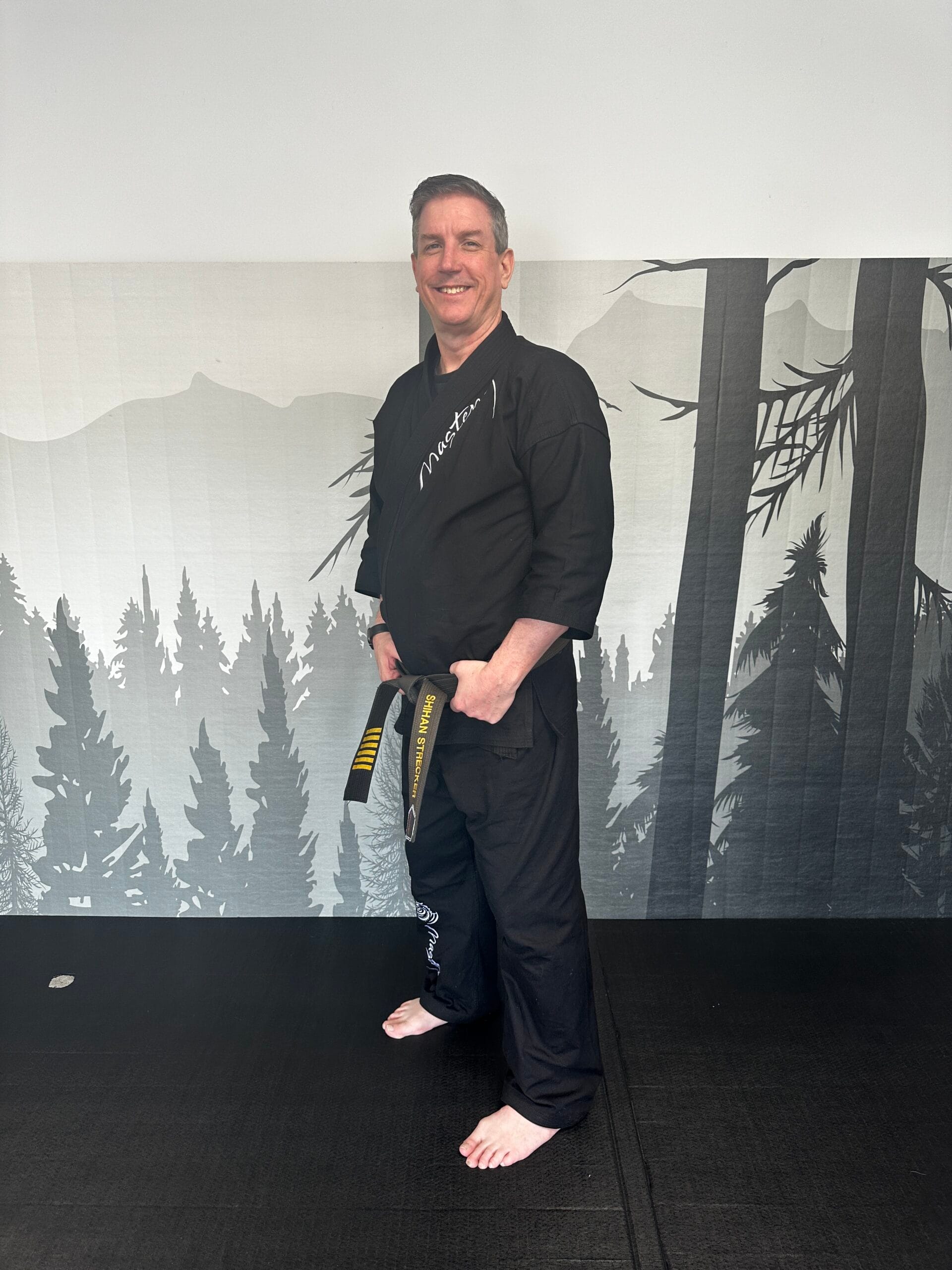Evolution of Belt Ranks
Taekwondo Belt Progression
The belt ranks in Taekwondo are a bit like life’s chapters in martial arts. This rank lineup shows how students move forward and learn. Here’s the lineup:
- White Belt
- Yellow Belt
- Orange Belt
- Green Belt
- Blue Belt
- Brown Belt
- Black Belt
This color-coded system isn’t just for show. It’s there to remind learners where they stand in their martial arts journey. Each belt color is a badge marking their growth and skill in Taekwondo.
| Belt Color | Rank Level |
|---|---|
| White | Beginner |
| Yellow | Novice |
| Orange | Intermediate |
| Green | Proficient |
| Blue | Advanced |
| Brown | Expert |
| Black | Master |
These colors also harken back to the days of the Koguryo and Silla Dynasties in old Korea. Initially, just white and black belts marked the distinction, thanks to Dr. Jigoro Kano, who kicked off this system for Judo in the 1880s. White’s for newbies, black’s for the pros.
To climb the ranks, students take what’s called the ITF Grading—think of it as a test. This gets tougher the higher the rank. Passing these tests shows not just advancing skill and technique but also a heart full of discipline and dedication.
The story of belts in Taekwondo is more than color coding—it’s about understanding how one grows in martial arts. Curious to know more about what these belt colors stand for? Dive into our article on martial arts belt colors meaning. Or, for a broader look at the history, check out our piece on martial arts belt ranking history.
Significance of Belt Colors
Ever wondered why those Taekwondo belts aren’t just for holding up your pants? They’re way more than flashy accessories—each color marks a stepping stone in a martial artist’s life. Think of them as badges that show how much you’ve leveled up—not just in skill but in mind and spirit, too.
Symbolism in Belt Colors
These belts aren’t just for show; each one carries significant meaning:
| Belt Color | Symbolism |
|---|---|
| White | If life’s a fresh canvas, the white belt is where you start painting. Beginning students are like blank slates, pure and ready to take on whatever Taekwondo throws at them. Born yesterday, newbies start their path to mastery here. |
| Red | Warning: approach with caution! Red belts are like walking road signs reminding students to keep themselves in line and giving opponents a heads-up. It’s a sign of being no beginner—but also of knowing the ropes well enough to handle that extra responsibility. |
| Brown | If you’re into gardening analogies, brown symbolizes the harvest. The sweat on the dojo floor has paid off, and these practitioners stand ripe for another round of growth. They’re not rookies anymore but are seeking what’s next. |
| Black | Think of it as the cosmic reset. Black belts have gathered all the wisdom they can from previous belts and are starting anew from an elevated place. It’s the beginning of something big—like stepping into the shoes of a true mentor. |
These colors tell the story of a martial artist’s climb to the top. Transitioning from white to black isn’t all about mastering kicks and punches—it also represents becoming a more rounded individual.
Belt colors are a profound element of the belt ranks in taekwondo history. Each one makes the journey richer in meaning, offering practitioners a glimpse into not just the skill involved, but the philosophies that go way back. Knowing these background stories sheds light on where taekwondo came from and the traditions that support its practice, as detailed in the sagas of martial arts belt ranking origins and martial arts belt ranking traditions.
Testing and Advancement
Grading Methods in Taekwondo
Learning Taekwondo is a rewarding journey, full of structured tests and new belt colors marking your progress. You’re not just kicking around; it’s about discipline and getting better every step of the way. Each jump in belt color comes with its own set of tough physical tests. You gotta show what you’ve got in forms, sparring, and self-defense, going from the basics all the way to mastering teaching techniques.
Here’s a quick cheat sheet:
| Belt Color | Rank Level | Test Complexity |
|---|---|---|
| White | Beginner | Learn basic moves, nothing fancy yet |
| Yellow | Novice | Get into easy patterns and some simple kicks |
| Green | Intermediate | Step it up with complex forms and start sparring |
| Blue | Advanced | Intermediate tricks and real sparring action |
| Red | Expert | Crush advanced forms and hone fighting skills |
| Black | Master | Total mastery: teach and take it to the next level |
These belt colors go way back to ancient Korea, during the Koguryo and Silla Dynasties. They picked up steam post-World War II when everyone needed a way to show off progress in a visible way. Before, it was just the newbies in white and black belts for the pros, a method born out of judo history. With more colors, students got a sweet way to track how much they’ve improved.
As skills grow, testing amps up. The ITF Grading checks if you really know your stuff at each level. You don’t just move up to move up, it’s about proving your expertise (ITF Taekwon-Do).
In short, Taekwondo grading is about personal growth and respecting tradition. Know the ropes when moving up in rank – it’s not just for show. If you’re curious about how these belts came to be, check out our articles on martial arts belt ranking history and martial arts belt ranking traditions.
Origin of Belt System
Introduction of Colored Belts
Back in the late 1800s, martial arts got a splash of color, thanks to Judo’s grandmaster, Dr. Jigoro Kano. He decided belts shouldn’t just hold your pants up but should show your sweat-level in training. In the 1880s, he started this whole trend with just two colors: white for newbies and black for the folks who could flip you on your head without breaking a sweat.
Jump to 1936, when Mikinosuke Kawaishi, a Japanese Judo expert, made the belt rainbow even bigger! He introduced more colors to help everyone, especially students in the West, better understand where they stood in the martial arts pecking order. This way, people could see their progress toward the coveted black belt, which was a huge boost for motivation and kept students pumped for more training.
After the last great war, colors really took off in all kinds of martial arts. Belts weren’t just a symbol of rank anymore—they were an affordable way to show it too. Most systems follow a nifty color flow: you start with white, move on to awesome hues like yellow, green, brown, and finally the all-mighty black buckle of expertise.
Dr. Kano’s idea didn’t just stick with Judo. It gave a boost to other martial arts, including Taekwondo. Gichin Funakoshi, the brain behind Shotokan Karate, loved the system and adapted it for his students. Byung Jick Ro took that baton and ran with it, bringing the structured belt framework to Taekwondo in the 1940s. Finally, students had a clear way to measure their awesome skills.
The story of martial arts belts is as much about cultural exchange as it is about kicking higher and punching faster. The switch to multicolored belts wasn’t just about looks; it made skill recognition simple and smooth. If you’re eager for more colorful insights, check out the chat over at martial arts belt colors meaning.
Rank Structure in Martial Arts
Dan and Geup System
Martial arts, especially taekwondo, have a rank system that keeps things ordered and interesting. Think of it like leveling up in a game, but the game is learning how to kick and punch like a pro. You’ve got the Geup system for colored belts, which is like the warm-up round, and the Dan system for the black belts, where it gets hardcore.
Geup (GUP) System
Colored belts are where it all starts. You’re a newbie wearing a white belt, full of hope and probably a bit clueless. Then you begin the journey, picking up skills and changing belt colors as you go. It’s like moving up from freshman to senior in school. Every dye job represents leveling up your game, and the number of levels you have to pass can vary, but before going for the black belt, you’ll need to go through these:
| GUP Level | Color | Rank Description |
|---|---|---|
| 10th GUP | White | Newbie alert! |
| 9th GUP | Yellow | You’ve got the basics down. |
| 8th GUP | Blue | Gaining some skills now. |
| 7th GUP | Green | Advanced moves at your feet. |
| 6th GUP | Purple | Style points earned. |
| 5th GUP | Red | Black belt, here you come! |
| 4th GUP | Brown | Top-notch techniques on display. |
| 3rd GUP | Black (1st degree) | On the Dan track, folks! |
These belts aren’t just for show; they push students to keep their eyes on the prize—the mighty black belt.
Dan System
Getting a black belt pops you into the Dan system, where you start earning degrees (like seniority stripes). In the International Taekwon-Do Federation (ITF), Dan ranks come with fancy titles:
| Dan Rank | Title in ITF | Description |
|---|---|---|
| 1st – 3rd Dan | Boosabum | Teaching the younger bucks |
| 4th – 6th Dan | Sabum | Master of the floor |
| 7th – 8th Dan | Sahyun | The wise seniors |
| 9th Dan | Saseong | The legends, grandmasters! |
In World Taekwondo (WT), reaching Grandmaster status means you’ve not only got the skills but the years to back it up—usually this means being over 40 years old.
Moving up takes blood, sweat, and maybe a few tears. You invest time sparring, coaching, and proving you’ve got the mastery vibe, including crushing it with routines called tuls. With each Dan rank, you raise the bar, giving back, guiding others, and rocking the martial arts scene.
This whole rank setup isn’t just about kicking higher or moving faster; it’s more about personal growth, staying disciplined, and respecting your fellow martial artists. Understanding this ranking gives you a peek into not just the tradition, but the whole mesmerizing journey of martial artists and the history they carry with those belts.
Belt System Traditions
Customs and Lore of Belt Ranks
The traditions around martial arts belt ranks go way beyond what color you wear or what level you’re at. These customs are like the heart and soul of martial arts, especially in Taekwondo, showing off the history, values, and culture that make these disciplines unique.
The whole idea of colored belts kicked off in the 1880s, thanks to Dr. Jigoro Kano, who cooked up this system for Judo. At first, it was just plain white and black belts—white for the newbies and black for those who know their stuff. This straightforward system was all about making it clear who was seasoned and who was just starting out.
Fast forward to 1936, and Mikinosuke Kawaishi, another Judo master from Japan, mixed things up by adding some color. This move was genius for Western students, who got a kick out of seeing their progress in living color. Taekwondo and other martial arts picked up on this colorful trend, too.
Colors in martial arts aren’t just pretty but pack quite a punch with meaning.
| Color | What It Means |
|---|---|
| White | Starting out fresh, like a blank slate full of potential. |
| Black | You’ve absorbed a ton of knowledge and are ready to teach others. |
Back in the day, before these colored belts, people tracked their martial arts prowess differently. Over in Okinawa, it wasn’t about the belts; it was about how many years you’d been in the game, what you’d learned, and how you’d grown as a person.
Promotions and the rituals that come with them are steeped in tradition. We’re talking skill demonstrations, knowledge tests, and showing mad respect for teachers and fellow students. Tie that new belt around your waist, and it’s like a badge of honor marking all your hard work.
The customs and stories tied to belt ranks are the glue that holds the martial arts family together, giving everyone a sense of belonging. They’re a nod to the grit it takes to move up and remind us of the rich history behind each move and step. If you’re curious and want to dig deeper, check out more on the martial arts belt ranking history.




